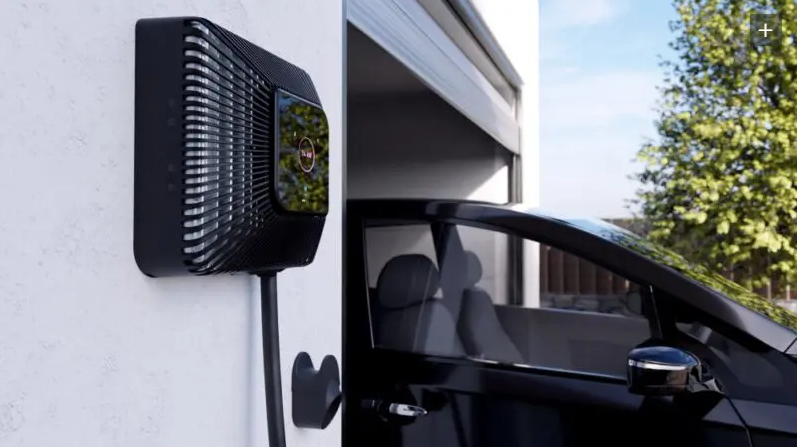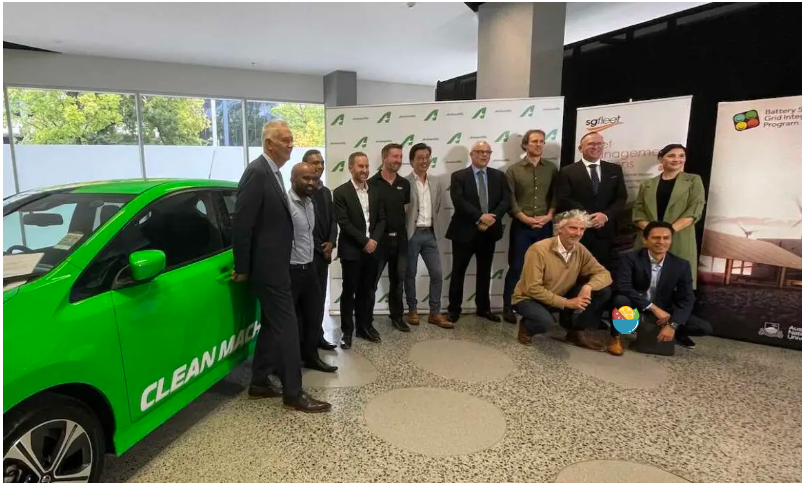
There has been a lot of hype in recent years around the ability of vehicle-to-grid (V2G) technology to solve a number of renewable energy transition problems, including unlocking additional battery storage capacity as well as grid services – and delivering cool and lucrative services to EV owners.
The ACT has just completed a landmark study in Australia of V2G technologies, called the Realising Electric Vehicle-to-grid Services (REVS) project, which has involved the local government, the ANU, utilities ActewAGL and EvoEnergy, SG Fleet, charging services company Jet Charge and EV maker Nissan.
The two year project was headed up by Dr Björn Sturmberg, Research Leader in the Battery Storage and Grid Integration Program at ANU.
The trial included fifty ACT Government EVs and one ActewAGL EV (all Nissan Leafs) and had a total cost of $6.26 million including a $2.7m grant awarded under ARENA’s Advancing Renewables Program.
“This trial has demonstrated that fleet EVs could play a vital role in supporting our energy grid and in boosting energy security,” said ACT energy minister Shane Rattenbury.
“The insights gained from the past two years will be particularly beneficial during times of peak power usage as a way of balancing renewable energy delivered to the grid.”
Vehicle-to-grid charging station costs to come down significantly in coming years.
While the ACT trial has shown the technology is possible, if V2G is going to work in the real world it needs to be affordable and scalable.
Tim Washington, the founder of Jet Charge, which supplied the bidirectional chargers for the trial, says V2G charging costs will come down significantly as the technology scales.

“What this trial has really shown is that in the long term once charging station prices come down and the prices of electric vehicles come down, which they will, there is sustained long term cost savings for EV drivers” said Washington.
“In this trial we’ve shown on the FCAS (frequency control ancillary services) market alone, approximately $400 per vehicle per year” he said.
“Many people will understand if you charge half from solar and half from off-peak that’s probably less than how much you’d electricity just driving electric.”
“So if you imagine a world where a bidirectional charging station costs just a bit more than a standard solar inverter, because you have to account for the plug and cable, in that world the electricity savings are there. We’re just waiting for equipment costs to come down as we hit mass scale.
“Even without the grid savings, the energy independence that people will gain from being able to use solar to charge their car and use their car to power their home will be worth it.
The Driven asked Washington what the cost of bidirectional charging needs to come down to.
“I’d like to see it below $5000, I think that will happen pretty quickly,” he said.
“My prediction is that almost every major solar inverter manufacturer in the world will create a bidirectional charging station to add to their portfolio because for them the R & D is actually not that much.”
Washington pointed to the intense competition in the market that will develop among charger providers, electric vehicles makers such as Ford, and maybe even Tesla, and solar inverter companies. He notes Enphase is already rolling out its first V2G technologies, and more will follow.
“We’re going to see an immense amount of competition” he said.
As one of the largest vehicle-to-grid trials in the world, the two-year REVS project will be a valuable contribution to figuring out the best way of utilising V2G technology.
You can learn more about the REVS project on the ANU’s Battery Storage and Grid Integration Program website.